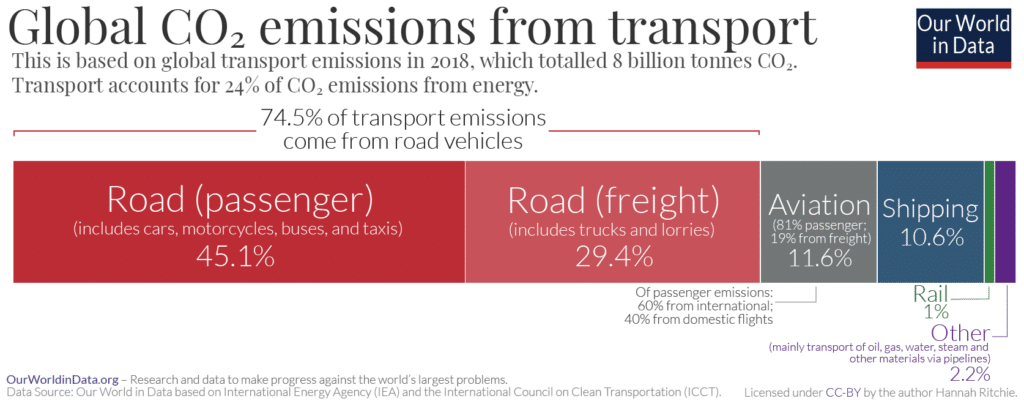COP 29 Urbanisation Day Outcomes: High-level Programme Launches
Society for Planet and Prosperity via X.com
23 November 2024 – by Eric Koons
Urbanisation is accelerating at an unprecedented rate, with around 56% of the world’s population living in cities. Recognising this, COP29’s Urbanisation Day highlighted the issue, acknowledging the critical role cities and regions play in the global energy transition and decarbonisation. Along with urbanisation, the day included a focus on transport and tourism – both key drivers of urbanisation and their associated economies.
The day focused on high-level discussions, agreements and programme launches to promote urban resilience and climate change strategies. This was the first time a COP has had a day focused on tourism, a major milestone in acknowledging its role in many economies and climate change.
The Intersection of Urbanisation, Greenhouse Gas Emissions and Climate Change
Urbanisation and climate change are intrinsically linked, with cities being both significant contributors to and victims of environmental degradation. Currently, urban areas consume 78% of the world’s energy and produce more than 60% of global greenhouse gas emissions. However, they occupy just 2% of the Earth’s surface. The surge in urban populations – projected to reach 68% by 2050 – has had significant impacts.
Beyond emissions, cities suffer from environmental issues that significantly impact local health and economies. For example, cities throughout India continually have some of the worst air quality globally, largely due to their urban growth. This reduces the resident’s average lifespan by years and stunts the country’s GDP. Urban planning should be a priority for developing countries, but they also need climate finance to combat global warming and address the climate crisis.
Role of Transportation in the Energy Transition
Transportation is a significant contributor to urban emissions, accounting for about 24% of global CO2 emissions from fuel combustion. It’s also a big user of fossil fuels. In densely populated cities, vehicles are often the leading source of air pollution and greenhouse gases. Transitioning to sustainable transportation is crucial for making sustainable cities and for a sustainable future.

Outcomes of COP29 Urbanisation Day
UN climate change conference COP29’s Urbanisation Day saw positive discussions around the theme and brought together a variety of stakeholders and experts. The primary outcomes focused on introducing and signing agreements on two long-term programs the host country, Azerbaijan, announced before COP29 2024.
Multisectoral Actions Pathways Declaration for Resilient and Healthy Cities
At COP29’s Urbanisation Day, the Multisectoral Action Pathways (MAP) Declaration for Resilient and Healthy Cities was introduced and endorsed by 160 stakeholders, ranging from city mayors to country leaders. While the declaration does not set out concrete goals, it focuses on fostering cross-sector collaboration to create cities that are resilient to climate change while promoting public health and well-being.
Key points of the MAP Declaration are as follows.
Integrating health into climate policies: Recognising the close link between climate change and health, the declaration urges cities to embed health considerations into environmental planning and policies.
Promoting sustainable urban development: Encouraging the adoption of green infrastructure, renewable energy solutions and sustainable transportation systems to reduce greenhouse gas emissions and resource consumption.
Enhancing multisectoral collaboration: Facilitating partnerships among governments, private sectors and civil society to implement effective and inclusive climate actions.
Building resilience against climate risks: Strengthening urban capacities to withstand and adapt to climate-related disasters through improved infrastructure and emergency preparedness.
The MAP Declaration aims to accelerate the transition toward sustainable, healthy and resilient urban environments by uniting various sectors and stakeholders. This initiative provides overarching commitments and frameworks for cities to address climate challenges and foster sustainable development initiatives.
Declaration On Enhanced Action in Tourism
The Declaration on Enhanced Action in Tourism was a significant milestone, marking the first tourism-dedicated focus at a COP. The declaration emphasises tourism’s crucial role in contributing to and combating climate change, as tourism accounts for 8.8% of global emissions. Furthermore, it acknowledges tourism’s importance to the global economy, making up 3% of global GDP.
The declaration promotes sustainable tourism practices that reduce carbon emissions, enhance environmental stewardship, support responsible economic growth and play a key role in global climate solutions. A core component of this is that countries agreed to consider tourism when drafting their climate plans. This includes adding tourism as a sector in their updated nationally determined contributions (NDCs).
Fifty countries and eight non-state entities signed or endorsed the declaration, showcasing a strong international commitment to transforming the tourism sector into a catalyst for positive environmental change.
Other Key Programmes and Outcomes from COP29 Urbanisation Day
Beyond the major declarations of the day’s ministerial meeting, Urbanisation Day introduced several smaller programmes and hosted valuable roundtables. One initiative was the launch of the Baku Continuity Coalition on Urban and Multilevel Climate Action. The programme was implemented in partnership with UN-Habitat to ensure urban resilience and adaptation remains a cornerstone of future COP meetings. While this is mainly symbolic, it signals that the world must continue prioritising urban climate planning.
The day also held meetings around aligning global events on urban climate action to provide a platform for the ongoing urban-focused climate dialogue. It was also the launch of the World Sustainable Hospitality Alliance’s framework to measure resource use in the tourism industry. A unified framework for tracking this data is critical to understanding and minimising the sector’s climate impacts.
Additionally, Brazil announced its updated NDC, which targets cutting greenhouse gas emissions by 59-67% by 2035. The NDC focuses on introducing more electricity and biofuels to the country’s transport sector.
Strengthening Urban Commitment for Future Climate Action
The United Nations’ Under-Secretary-General and UN-Habitat Executive Director Anacláudia Rossbach summarised the results of the day’s ministerial meeting by saying:
“The Ministerial Meeting on Urbanisation and Climate Change comes at a critical moment as countries are revising their nationally determined contributions (NDCs). This meeting represents a key opportunity for dialogue that can help highlight the importance of aligning national strategies with local realities including the housing crisis, energy poverty, the loss of nature and biodiversity in cities and the challenge of financing development priorities. Ultimately, we believe this meeting will help maximise our collective impact in addressing climate challenges.”
COP29’s Urbanisation Day ended on a promising note, showing how world and industry leaders view the urban environment and tourism in relation to climate change and resilience. Prioritising this connection in future COPs, local policies and climate strategies is critical to ongoing progress and alignment with the Paris Climate Agreement.
by Eric Koons
Eric is a passionate environmental advocate that believes renewable energy is a key piece in meeting the world’s growing energy demands. He received an environmental science degree from the University of California and has worked to promote environmentally and socially sustainable practices since. Eric’s expertise extends across the environmental field, yet he maintains a strong focus on renewable energy. His work has been featured by leading environmental organizations, such as World Resources Institute and Hitachi ABB Power Grids.
Read more




